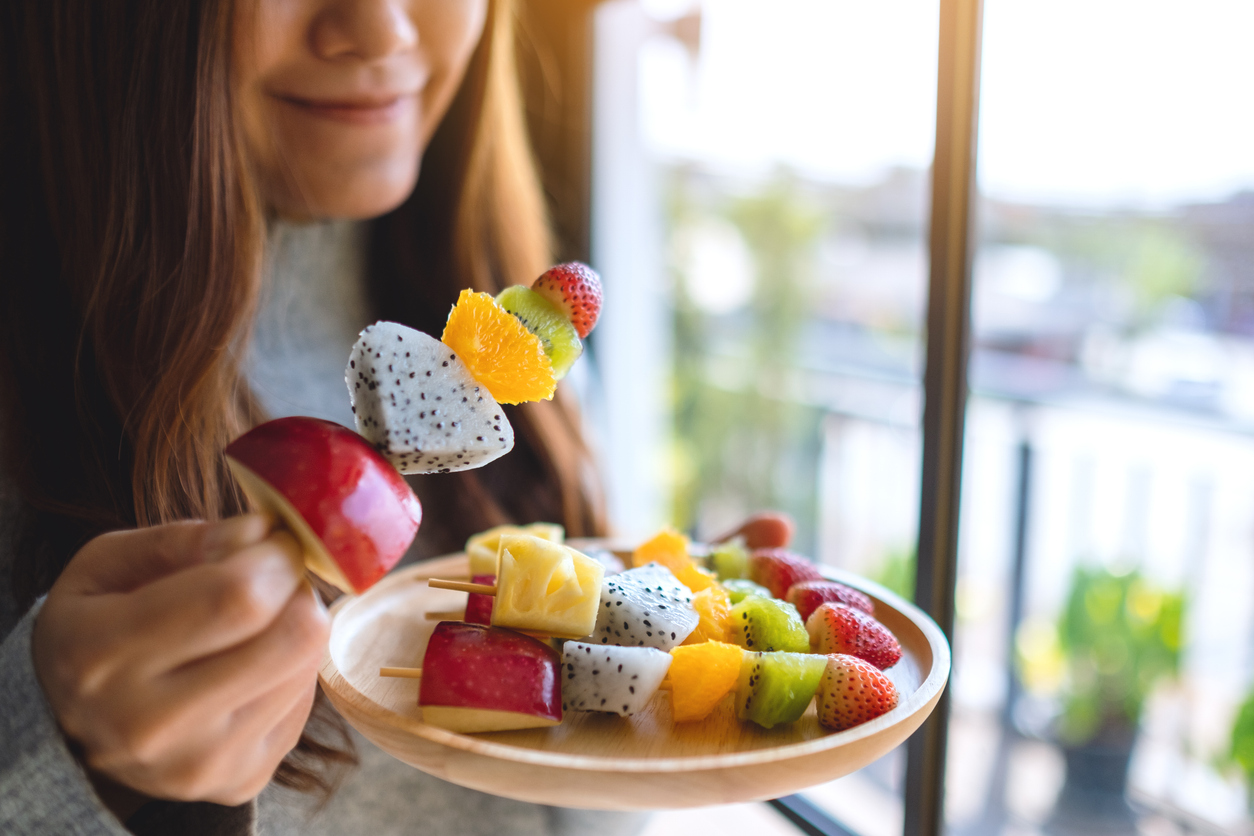When it comes to weight loss, snacking often gets a bad reputation. Many people associate snacks with unhealthy choices like chips, cookies, or sugary drinks, which can derail even the best weight loss efforts. However, when done right, snacking can be a valuable part of your weight loss plan, helping you stay satisfied, keep hunger at bay, and avoid overeating at meals. The key is choosing snacks that are nutrient-dense, satisfying, and low in empty calories. In this blog, we’ll explore how to snack smartly and what kinds of snacks are best when you’re trying to lose weight.
Why Snacking Can Be Beneficial for Weight Loss
Before diving into what to eat, it’s important to understand why snacking can be beneficial for weight loss. Proper snacking can help:
1. Control Hunger and Prevent Overeating: When you go too long between meals, your hunger levels can spike, leading to overeating or making poor food choices at your next meal. A healthy snack can bridge the gap, keeping your hunger in check and helping you make better decisions.
2. Boost Metabolism: Eating small, balanced snacks can keep your metabolism active throughout the day. This doesn’t mean that snacking will dramatically boost your metabolism, but it can help maintain a steady energy level, which is crucial when you’re trying to lose weight.
3. Provide Nutrients and Energy: Snacks can be an opportunity to fuel your body with essential nutrients, especially if you find it challenging to meet your nutritional needs through three meals alone. Choosing snacks rich in protein, fiber, vitamins, and minerals can support your overall health while aiding in weight loss.
4. Support Portion Control: When you have healthy snacks throughout the day, you’re less likely to overeat during meals. This practice helps you stay mindful of portion sizes, which is essential for maintaining a calorie deficit necessary for weight loss.
What Makes a Snack Healthy?
Not all snacks are created equal. To be a helpful part of your weight loss plan, a snack should be:
– Low in Calories: Aim for snacks that are around 100-200 calories. This amount is enough to satisfy hunger without adding too many calories to your daily intake.
– High in Protein and Fiber: Protein and fiber are the two most filling nutrients. They help keep you satisfied longer and prevent blood sugar spikes that can lead to cravings.
– Nutrient-Dense: Choose snacks that provide vitamins, minerals, and other nutrients your body needs to function optimally.
– Low in Added Sugars and Unhealthy Fats: Avoid snacks that are high in added sugars, refined carbs, and unhealthy fats, as these can contribute to weight gain and other health issues.
Healthy Snacking Ideas for Weight Loss
Now that you know the benefits of snacking and what makes a snack healthy, here are some snack ideas that fit the bill when you’re trying to lose weight.
Greek Yogurt with Berries
Greek yogurt is an excellent source of protein, with around 15-20 grams per serving. Adding a handful of berries like blueberries, strawberries, or raspberries not only enhances the flavor but also adds fiber and antioxidants. This snack is low in calories, high in nutrients, and very satisfying.
Why it’s great: The combination of protein from the yogurt and fiber from the berries helps keep you full and supports your digestive health. Plus, the natural sweetness of the berries satisfies sugar cravings without the need for added sugars.
Apple Slices with Almond Butter
Apples are high in fiber and water, making them filling and hydrating. Pairing apple slices with a tablespoon of almond butter adds healthy fats and protein, creating a well-rounded snack that’s both delicious and nutritious.
Why it’s great: This snack is simple to prepare and easy to take on the go. The fiber in the apple helps slow digestion, while the almond butter provides lasting energy, keeping you full until your next meal.
Hummus and Veggies
Hummus, made from chickpeas, is rich in protein and healthy fats. Pairing hummus with crunchy vegetables like carrots, cucumber, bell peppers, and celery adds fiber and vitamins while keeping calories low.
Why it’s great: This snack is nutrient-dense and can be tailored to your taste preferences. The protein in hummus and the fiber in veggies make it a filling option that helps you avoid overeating later.
Hard-Boiled Eggs
Eggs are a powerhouse of nutrients and an excellent source of high-quality protein. A hard-boiled egg is a quick, portable snack that can keep you full for hours. Sprinkle a little salt, pepper, or paprika for added flavor.
Why it’s great: With just about 70 calories per egg, this snack is low in calories but high in protein and healthy fats, making it perfect for weight loss.
Cottage Cheese with Pineapple
Cottage cheese is a low-calorie, high-protein dairy product that pairs well with a variety of fruits. Adding a few chunks of pineapple brings a sweet, tangy flavor along with a dose of vitamin C.
Why it’s great: This snack is rich in protein and contains probiotics, which are good for gut health. The natural sweetness of pineapple satisfies your sweet tooth without adding too many calories.
Mixed Nuts
Nuts are calorie-dense, so portion control is key, but they are also packed with healthy fats, protein, and fiber. A small handful of mixed nuts (about 1 ounce) can be a satisfying and nutritious snack.
Why it’s great: Nuts are filling and provide a good balance of fats, protein, and fiber. They’re also convenient and don’t require any preparation.
Whole Grain Crackers with Avocado
Whole grain crackers provide complex carbohydrates that offer lasting energy, while avocado adds healthy fats and fiber. This combination is not only tasty but also supports satiety.
Why it’s great: Avocado is rich in monounsaturated fats, which are heart-healthy and help you feel full. Pairing it with whole-grain crackers makes for a balanced, satisfying snack.
Edamame
Edamame, or young soybeans, are a great source of plant-based protein and fiber. You can buy them shelled or in the pod, either fresh or frozen. A half-cup serving is around 100 calories and provides 8 grams of protein.
Why it’s great: Edamame is low in calories and high in protein, making it an ideal snack for weight loss. It’s also packed with vitamins and minerals like iron, magnesium, and folate.
Oatmeal with Nuts and Berries
Oatmeal isn’t just for breakfast. A small bowl of oatmeal made with whole oats, topped with a few nuts and fresh berries, makes a hearty and satisfying snack. Oats are high in fiber and can help keep you full between meals.
Why it’s great: This snack is warm, comforting, and packed with fiber. It’s also versatile, allowing you to switch up the toppings based on your preferences and nutritional needs.
Protein Smoothie
A smoothie made with a scoop of protein powder, unsweetened almond milk, and a handful of spinach or kale is a quick, easy, and portable snack. Add a few frozen berries or half a banana for extra flavor and nutrition.
Why it’s great: Protein smoothies are highly customizable and can be tailored to your specific dietary needs. They’re a great way to get a boost of protein, fiber, and micronutrients in one delicious drink.
Tips for Successful Snacking
In addition to choosing the right snacks, how you snack also plays a role in your weight loss journey. Here are a few tips to keep in mind:
1. Plan Your Snacks: Just as you plan your meals, plan your snacks. Having healthy options on hand can help you avoid reaching for less healthy alternatives when hunger strikes.
2. Portion Control: Even healthy snacks can contribute to weight gain if eaten in large quantities. Pay attention to portion sizes to ensure you’re not overdoing it.
3. Mindful Eating: Avoid snacking mindlessly in front of the TV or computer. Instead, take the time to enjoy your snack, paying attention to the flavors and textures. This can help you feel more satisfied and prevent overeating.
4. Stay Hydrated: Sometimes what feels like hunger is thirst. Before reaching for a snack, try drinking a glass of water and see if that satisfies you.
5. Balance Your Macros: Aim for snacks that include a balance of protein, healthy fats, and complex carbohydrates. This combination helps keep you full and provides sustained energy.
6. Listen to Your Body: Eat when you’re genuinely hungry, and stop when you’re satisfied. Snacking out of boredom or stress can lead to unnecessary calorie consumption.
Learn more with Veera
At Veera Health we believe healthy snacking can be a powerful tool in your weight loss arsenal when done right. By choosing nutrient-dense, low-calorie snacks that are high in protein and fiber, you can keep your hunger in check, maintain your energy levels, and avoid the pitfalls of overeating. Remember to plan your snacks, pay attention to portion sizes, and listen to your body’s hunger cues. With these strategies, you can enjoy snacks that support your weight loss goals and contribute to your overall health.


















